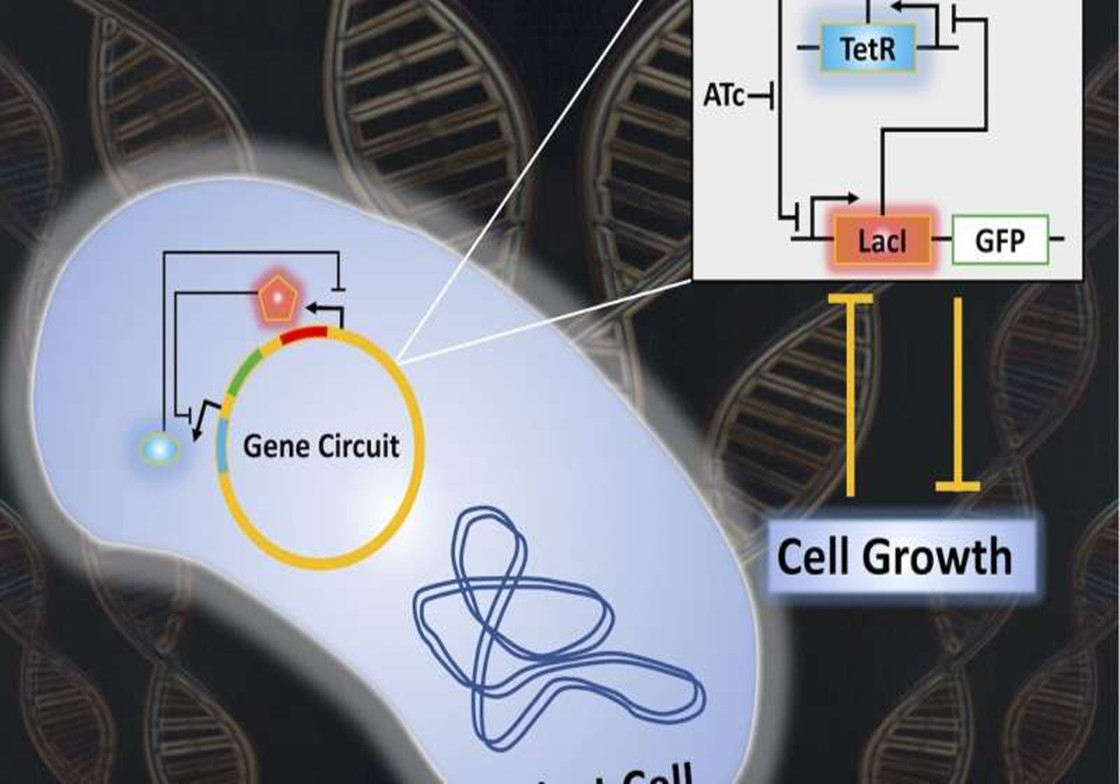
Recent discoveries by two research teams in the Ira A. Fulton Schools of
Engineering at Arizona State University are advancing the field of
synthetic biology.
Assistant Professor Xiaojun Tian and Associate Professor Xiao Wang conducted a year-long collaboration with their laboratory groups in the School of Biological and Health Systems Engineering, one of the six Fulton Schools. Results from their novel research into ways that engineered gene circuits interact with biological host cells have been published this week in the scientific journal Nature Chemical Biology.
Synthetic biology applies engineering methods to design new biological networks or redesign aspects of existing biological systems. It is a rapidly emerging field of study, and many significant advances have been made during the past 20 years.
Early work included creating synthetic gene circuits and placing them within natural host cells.
"But the concept of a circuit here is an abstract one," Wang says. "Imagine a sequence of genetic segments in which the first one encodes or produces a particular protein. That protein, in turn, can either activate or inhibit the expression or protein production from another segment in the genetic sequence. If you keep expanding this idea, you can imagine it's like a network."
It is this chain of influence or inducement that is functioning as a circuit, rather than the physical connections within the genetic sequence. However, previous research has focused on just the behaviors of engineered genetic circuits themselves, with little attention to the background or context represented by host cells.
"It is hard to predict how these interactions affect the functions of the engineered genetic circuits," Tian says, "not to mention how to control them and make the circuits operate as desired within complicated, real-life environments."
Indeed, these synthetic gene circuits generally work only in a laboratory environment, not in more lifelike conditions. And this limitation greatly inhibits the application of engineered gene circuits in clinical settings.
Seeking to advance the field in that practical direction, the new research by Tian and Wang explored the relationship between the synthetic gene circuits and their host cells. Specifically, they examined the impact of "memory" circuits implanted within host cells, and the influence of gene circuit "topologies," or the architecture of interconnections among circuit components, in relation to host cell growth.
In the context of this work, the idea of memory relates to the continuation of influence or inducement within an engineered gene circuit even with the absence of a stimulus.
"Think about a light switch in your house," Wang says. "The light stays on even when you remove your finger from the switch. We refer to that persistent state as memory."
Tian and Wang's new research revealed that memory circuit topologies are significantly influenced by host cell behavior.
"We verified that influences are exchanged between the gene circuit and the host cell," Tian says. "That is, the circuit impacts the host cell, which in return has an impact on the circuit. It's like a loop.
"But we also demonstrated that the impact on a circuit's functionality is dependent on its topology," he says. "So, one circuit topology shows better performance than others within a dynamic host environment."
Their discovery relating circuit topology to a host cell's impact on circuit function is a first in the field of synthetic biology, and it expands meaningful scientific understanding of these complex interactions.
"It paves the way for building robust, engineered gene circuits," Tian says. "These could one day enhance interventions against the metastasis of cancer, for example, by slowing the ability of cancer cells to translate their development."
Progressing from the research that Tian and Wang have published includes examining the impact of adding additional synthetic gene circuits or modules into host cells, which substantially elevates the level of complexity as modules compete for resources within the cellular system.
Wang says that the School of Biological and Health Systems Engineering within the Fulton Schools is particularly well-placed for discoveries in synthetic biology.
"We have a critical mass of dedicated people who are strategically invested in advancing this area of research for the long term," he says. "So, we are seeking to be a leader in this field."

